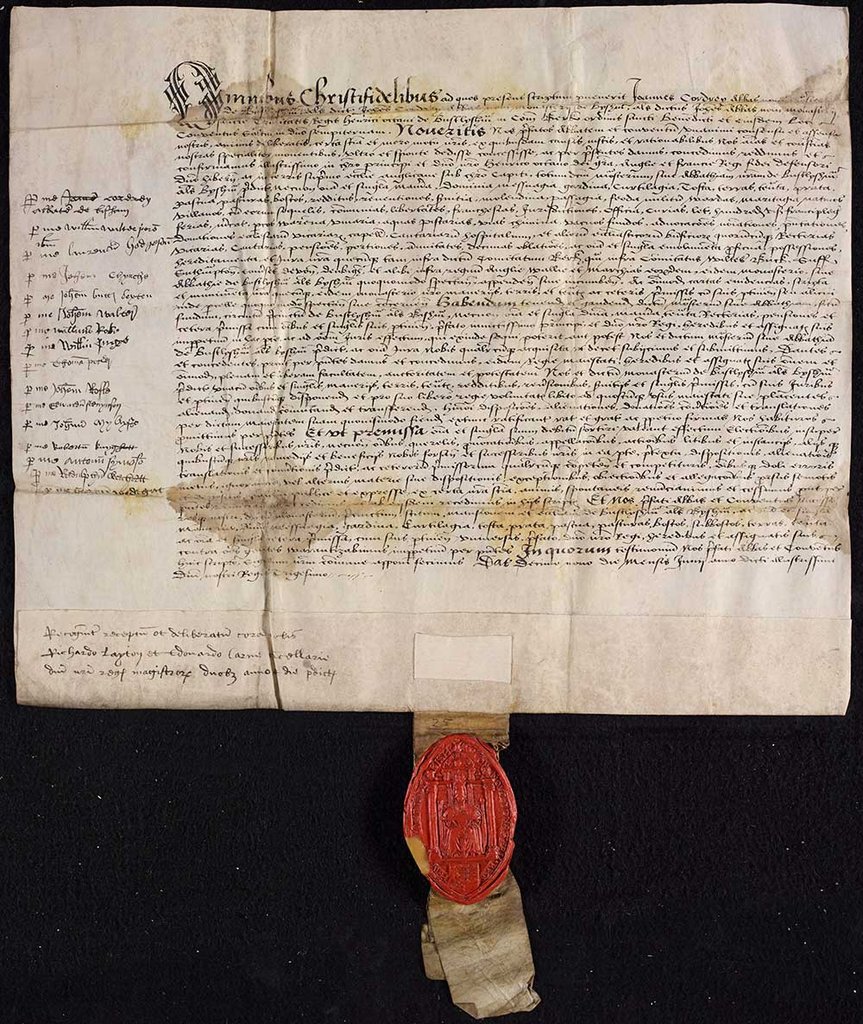The dissolution of the monasteries
The Act of Supremacy in 1534 declared Henry VIII the Supreme Head of the Church of England, separating England from papal authority. This and later acts gave the Crown the authority to disband monasteries in England, Wales and Ireland, appropriate their income and dispossess them of their assets.
Act of Supremacy
Date: 1534
Catalogue reference: View the record N/A in the catalogue
With this act, Parliament declared Henry VIII the Supreme Head of the Church of England, formally rejecting the authority of the Roman Catholic Church.
The momentous decision to break from Rome divided the nation and created a new and huge extension to what was considered treason: faith. Denying the king’s supremacy over the Church became treason and keeping faith with both the established Catholic Church and Crown became impossible.
In the century after Henry’s death the faith of the nation shifted from Protestant to Catholic and back again.
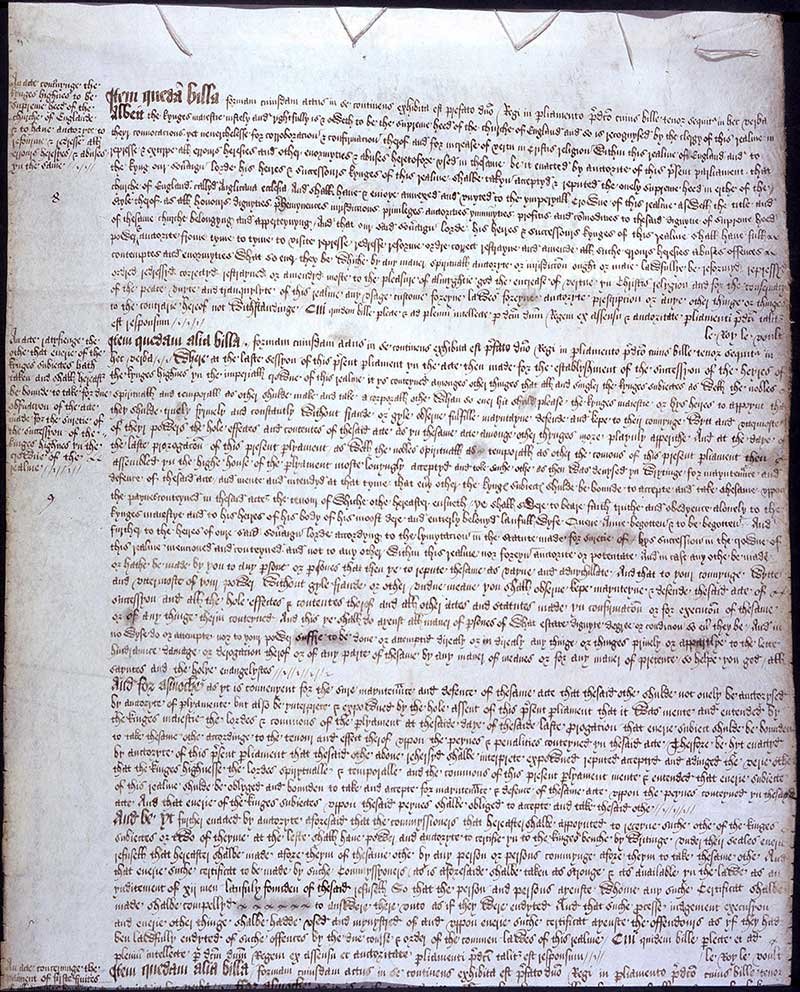
Valuation of the church’s finances by agents of Henry VIII
Date: 1535
Catalogue reference: View the record N/A in the catalogue
In 1534, Henry VIII appointed himself head of the Church in England. He also passed a law so that all taxes on Church income were paid to the Crown (not the Pope). Valor Ecclesiasticus, the greatest survey of ecclesiastical property since 1291, was undertaken across the country in 1534-35.
The original returns were made to the Exchequer by the commissioners appointed under the First Fruits and Tenths Act of 1534 to value all ecclesiastical benefices throughout England and Wales. The purpose of the valuation was to ensure that the income to the Crown from first fruits and tenths reflected true current annual incomes.
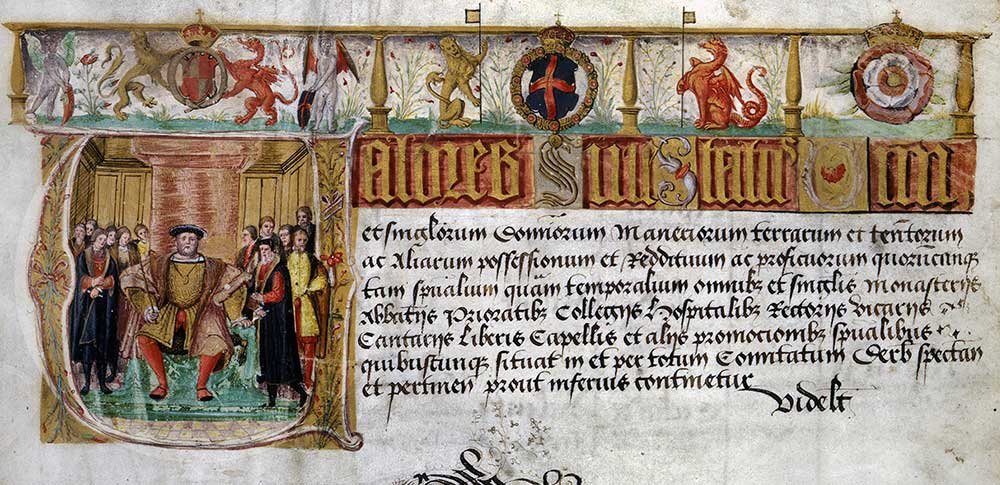
Signatures renouncing the Pope’s supremacy
Date: 1534
Catalogue reference: View the record N/A in the catalogue
These signatures from the Province of Canterbury renouncing the Pope’s supremacy over the English Church in response to the Act of Supremacy, record individual churches and deaneries within the Province of Canterbury.
Here the Deaneries of East and West (Wivelshire) in Cornwall were recorded, with each individual signing the renunciation.
It is often possible to trace names of individuals between the many documents signed at the dissolution of the monasteries, including these renunciations of papal supremacy, acknowledgements of Henry VIII’s supremacy over the Church of England, and the later surrender of many religious houses.
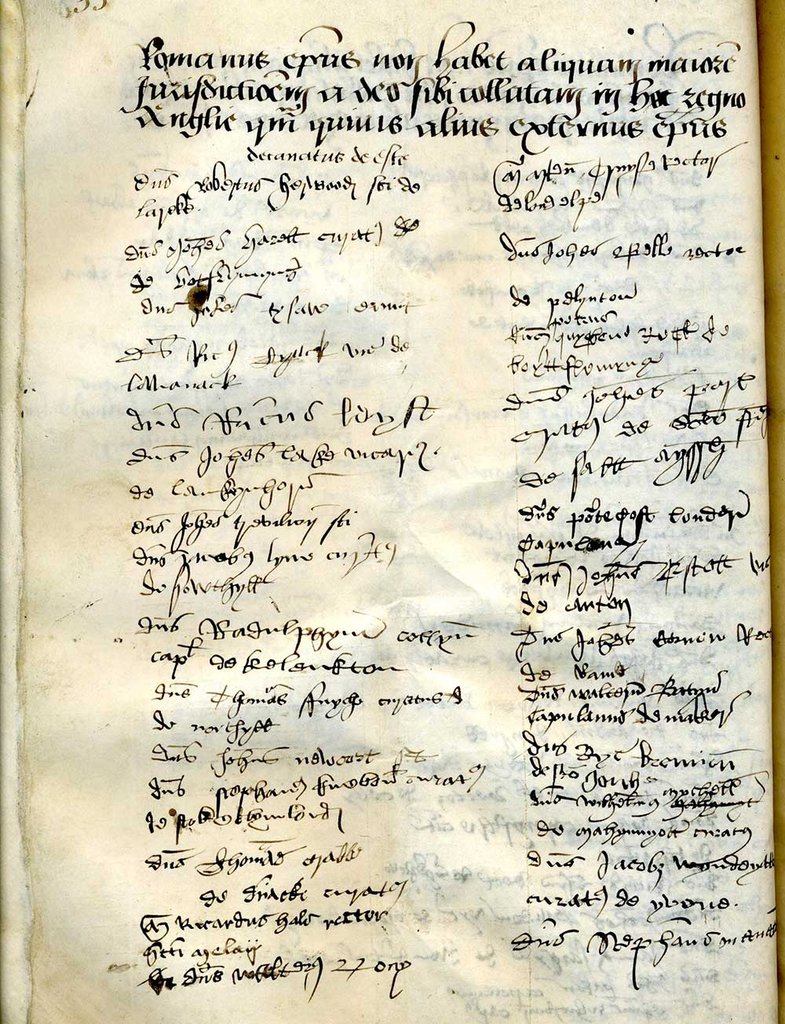
Report on alleged offences by monasteries in Bath
Date: 1535
Catalogue reference: View the record N/A in the catalogue
In the aftermath of Henry VIII’s decision to break from the Roman Catholic Church, his chief minister Thomas Cromwell commissioned a large-scale visitation of all the religious foundations in the country, to assess their spiritual wellbeing. The visitation took aim at ‘superstition’ and alleged widespread immorality.
The monks in Bath were alleged to have been morally corrupt, ‘some of them having ten women, some eight’. The use of relics, including a chain of St Peter used in childbirth, and four holy combs were noted, and a book of miracles caused by the Virgin Mary was described as a fiction ‘able to match the Canterbury Tales’.
The charges may have been used as an excuse for the subsequent dissolution of the monasteries.
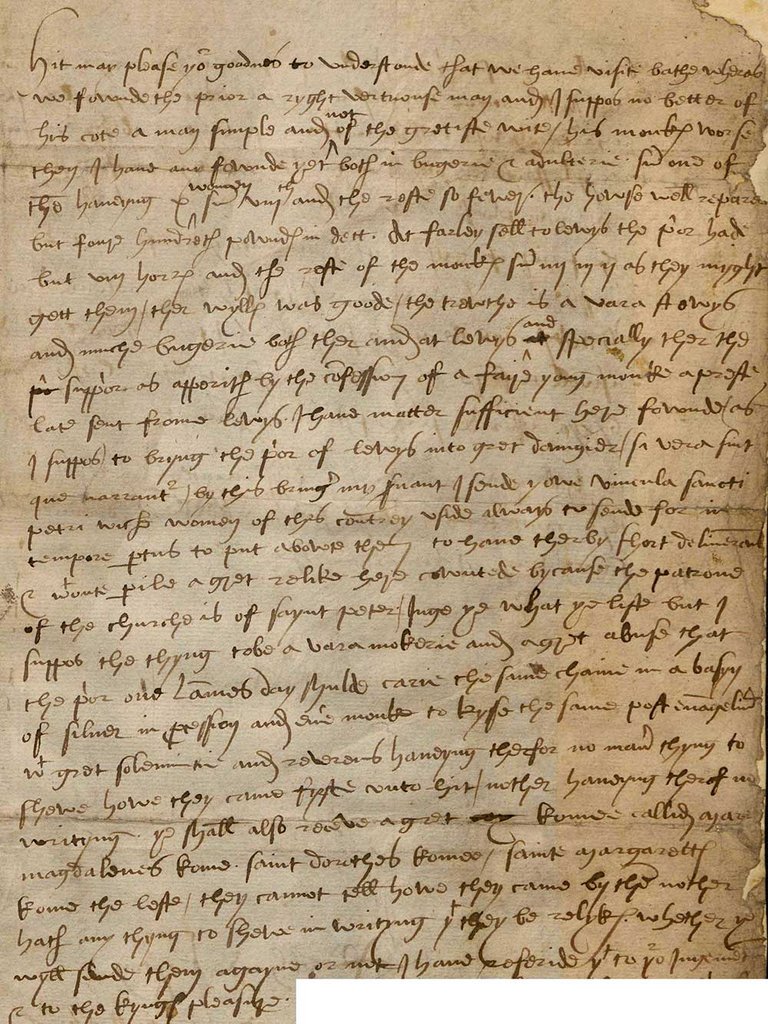
Accounts for the dissolution of Chertsey Abbey
Date: 22 June 1538
Catalogue reference: View the record N/A in the catalogue
As part of the dissolution of the monasteries, many dissolved houses were broken up or repurposed as secular lodgings. At Chertsey in Surrey some of the abbey buildings were broken down by Crown officials, with the stone, lead and other resources used to build and repair the royal palaces of Oatlands and Hampton Court.
These accounts, filed at the Exchequer, detail various payments and costs involved with tearing down the abbey buildings, including daily wages for bricklayers, plumbers and labourers. They include straw on which the stones of the abbey’s steeple were pulled onto to be broken up, two large baskets to bring down the small stones from the pinnacle of the steeple, and wheelbarrows brought from Hampton Court.
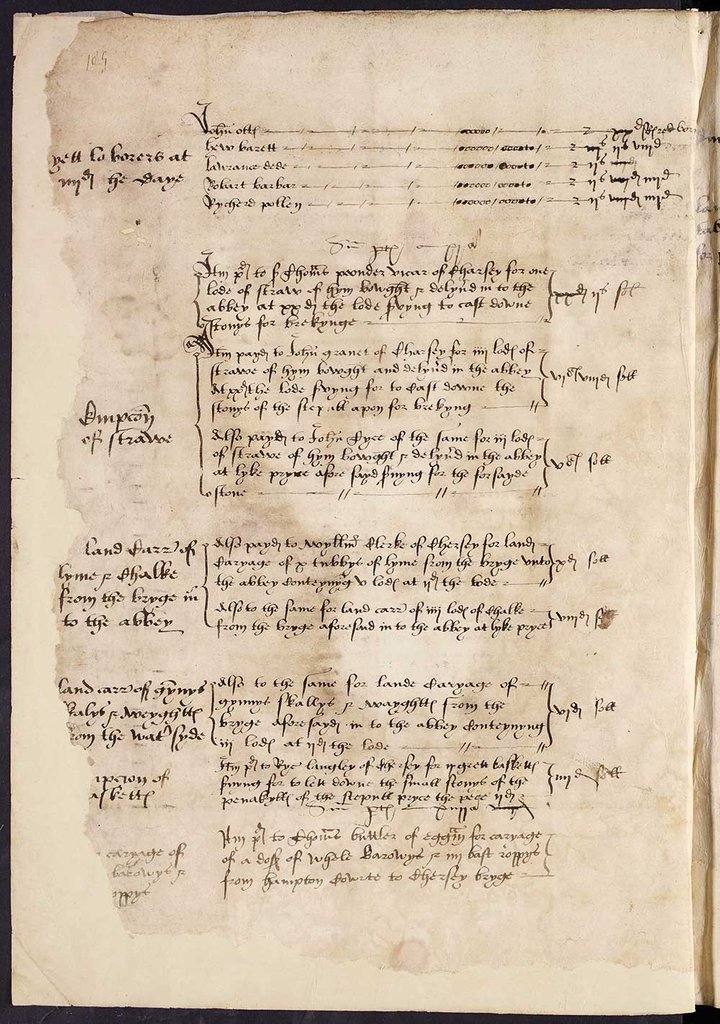
Surrender of Bisham Abbey, Berkshire
Date: 1538
Catalogue reference: View the record N/A in the catalogue
Chertsey Abbey had surrendered to the Crown in July 1537 in anticipation that the house would be re-founded at Bisham Abbey (a former house of Augustine Canons, which had itself been dissolved in July 1537). The abbey community moved to their new site in December, but by June 1538 had become impoverished and were again forced to surrender to the Crown.
The surrender was signed by each of the monks, with some of the names matching the names of monks previously recorded at Chertsey:
John Cowdrey (abbot), William Walter (prior), Lawrence Hodgeson, John Church, John Buttes (sexton), John Walter, William Roke, William Ingys, Thomas Potter, John Rofle, Edward Stevynson, John Myllyste, Robert Knight, Anthony Symoson, Ralph Wachatt and George Wodegat.
